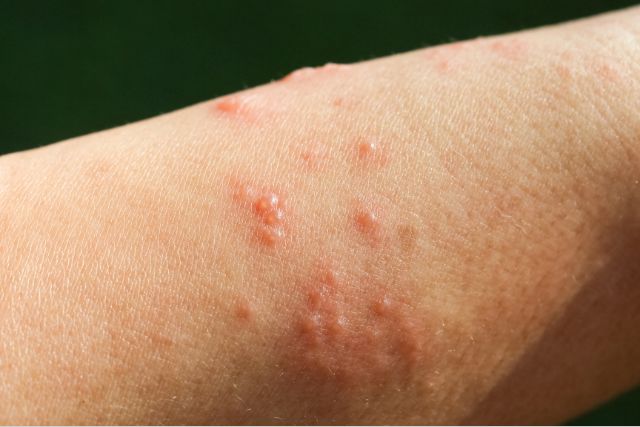EADV Congress 2025 sessions spotlight
Updates
- Wed 17 Sep
- 14:15 - 15:45 CEST
- N01
Presentation details:


Bullous Diseases: Diagnosis, Challenges & Advances
Chair: Carmen Salavastru, Romania
Join us for an insightful exploration into the world of bullous skin diseases, featuring expert-led presentations and real-world clinical insights.
Attending the session entitled “Bullous diseases” at the 2025 EADV Congress in Paris offers a valuable opportunity for dermatologists to deepen their understanding of complex and often under-recognized disorders such as dermatitis herpetiformis and epidermolysis bullosa acquisita, as well as autoimmune blistering diseases in children and other maladies that may present with blisters. These topics are crucial for improving diagnostic accuracy and optimizing patient care in both adult and paediatric populations.
Particularities of these maladies in children will be highlighted during the lecture “Special focus: Children” and will be illustrated by complex clinical cases and management strategies tailored for the paediatric population.
Bullous diseases in children, including autoimmune types (e.g., pemphigus vulgaris, bullous pemphigoid) and genetic forms like epidermolysis bullosa (EB), are rare and potentially severe.
Important advances in the diagnosis and treatment of these disorders have been made. The efficacy and safety of rituximab in treating pemphigus vulgaris in children relays on more robust data and the latest developments show promising results in improving the outcome for various forms of Epidermolysis bullosa.
“Bullae in other skin diseases” will explore the diagnostic challenges and clinical implications of bullous presentations beyond classic autoimmune disorders, highlighting how vesiculobullous lesions may appear in infectious, drug-induced, inflammatory, and genetic contexts. This talk aims to provide hints for differential diagnosis and management, making it especially relevant for clinicians seeking to refine their expertise in this area of dermatology.
Why attend this session:
- Enhance diagnostic accuracy
- Learn about rare and complex cases
- Get updated on the latest therapeutic approaches
- Network with fellow dermatologists and experts
Presentation details:


Herpetiform dermatitis
Agnieszka Żebrowska, Poland
Dermatitis Herpetiformis – From Classical Understanding to New Horizons in Research and Treatment
Dermatitis herpetiformis (DH) remains one of the most fascinating examples of the gut–skin connection, representing a chronic, pruritic, autoimmune blistering disorder closely linked to celiac disease. In this lecture, we will revisit the well‑established knowledge on DH, including its epidemiology, genetic background, immunopathogenesis, and clinical spectrum — from typical clinical picture to rare, atypical variants.
The second part of the talk will highlight the latest advances in DH research: emerging insights into the role of the microbiome, refined understanding of immune mechanisms, and novel therapeutic approaches for refractory disease, including biologic agents and probiotics. We will also discuss the potential of AI and precision medicine in redefining diagnosis and treatment strategies.
Presentation details:


Bullae in other skin diseases
Emiliano Antiga, Italy
While classically associated with autoimmune bullous diseases, blisters also arise in several other non-autoimmune conditions. Accordingly, blisters can result from mechanical, infectious, genetic, metabolic, or drug-induced etiologies.
Infectious agents are a common cause of blistering. Viral infections such as herpes simplex virus and varicella-zoster virus produce characteristic grouped vesicles on an erythematous base, while bacterial infections, notably Staphylococcus aureus, can lead to bullous impetigo or staphylococcal scalded skin syndrome through the action of exfoliative toxins targeting desmoglein-1. Fungal infections, such as tinea pedis, may occasionally cause vesiculobullous lesions in the interdigital or plantar areas.
Inherited blistering disorders, such as epidermolysis bullosa, are characterized by mechanical fragility of the skin due to mutations in genes encoding structural proteins like keratins, laminins, or collagens. These conditions range from mild to life-threatening and manifest with blistering following minor trauma. In porphyrias, such as porphyria cutanea tarda, blisters result from photosensitivity due to accumulation of porphyrin intermediates in the skin. Metabolic and nutritional disorders may also contribute, including diabetes with bullosis diabeticorum.
Finally, several inflammatory or immune-mediated skin diseases can occur with blisters. Among inflammatory conditions, contact dermatitis and drug-induced eruptions (including the Stevens-Johnson syndrome/toxic epidermal necrolysis spectrum) are well-recognized causes of superficial blisters, often accompanied by mucosal involvement. Neutrophilic dermatoses, including Sweet’s syndrome, pyoderma gangrenosum, and Wells syndrome, as well as eosinophilic dermatoses such as Eosinophilic dermatosis of hematologic malignancies can also result in blistering, making the differential diagnosis with autoimmune bullous disease difficult.
In summary, while autoimmune blistering diseases such as pemphigus and bullous pemphigoid remain the most relevant diseases presenting with blisters, several other conditions should be considered. Understanding the broad differential diagnosis of blistering diseases beyond autoimmunity is critical. Clinical presentation, patient history, histopathology, and other examinations (e.g., direct and indirect immunofluorescence, serology, and genetic testing) guide the diagnostic process. Prompt recognition of the underlying etiology is essential for preventing complications and improving patient outcomes.
- Blister can be present in several skin and systemic conditions other than autoimmune blistering diseases, including mechanical, infectious, genetic, metabolic, inflammatory or drug-induced diseases
- Clinical presentation, patient history, histopathology, and the absence of positive findings at immunopathological examination such as direct and indirect immunofluorescence can address the diagnosis
- Prompt recognition of the underlying disease is essential for correct management and to improve patient outcomes

